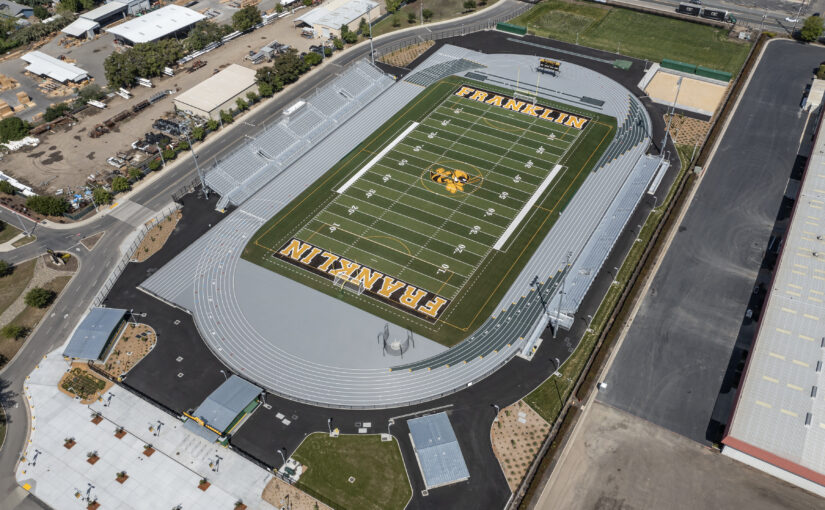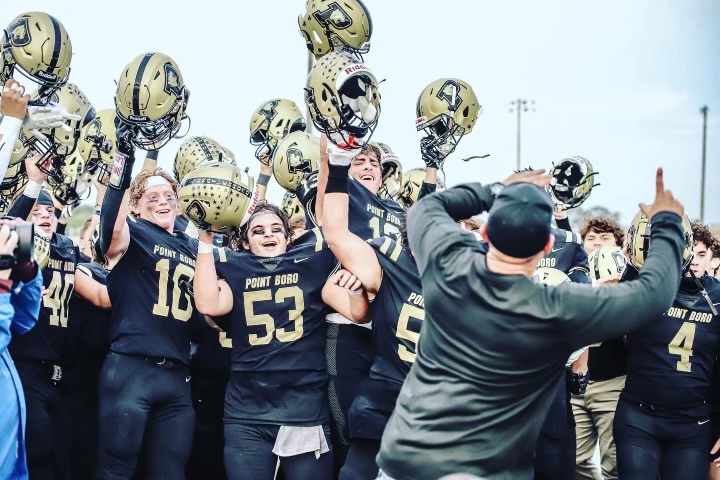Football: Principles, progressions of the linebacker position
We teach our linebackers how to play our style of football with a progression that we use at practice, spring drills and early-preseason practice.
Stance

Legs are shoulder-width apart, with the linebacker on the balls of his feet, knees bent. He is also bent at the waist, low enough to make his number difficult to read.
Hands are held at the side of the hips, like a western movie gunslinger reaching for his guns, or in front between his legs, but not resting on the thighs.It’s important to work on stances every day. Humans are creatures of habit, so make it a habit to be in a good stance.
Alignment: 4 1/2 to 5 yards deep (Diagrams 1-2)
In a 4-3 defense, the middle linebacker (Mike) is in strong A gap, the strong backer (Sam) is in strong C gap, and the weak backer (Will) is in Weak B gap (Diagram 1).
 |
| Diagram 1 |
If there are two or more wide receivers to a side, the backer to that side splits the difference between the No. 2 receiver and the tackle (Diagram 2).
 |
| Diagram 2 |
Reads & keys (Diagram 3)
If the offense is in a two-back I set, Mike reads the first back while Sam & Will read the second back (Diagram 3).
 |
| Diagram 3 |
If the offense is in the shotgun, the backers cross-key, meaning that they read the back away from them. In the shotgun, Mike will key the QB.
 |
| Diagram 4 |
Cross-keying works on both one-back (Diagram 4) and two-back sets (Diagram 5). If the offense is a big misdirection team, such as a Wing-T or likes to pull linemen, the backers must read the guards.
 |
| Diagram 5 |
Initial movement (Diagram 6)
At the snap, the backers take one step to their gap and re-gather.
 |
| Diagram 6 |
Determining run or pass
Backers read through the linemen to the backs to determine if the play is a run or pass.
If linemen are set up higher and retreat, backers play pass while watching the running backs and QB. If linemen drive out hard, backers play the run while watching the running back and being cautious of the play-action pass.
Block destruction (Diagram 7)
 |
| Diagram 7 |
Backers must attack blockers, using both hands and feet. Hands attack the V of the neck; at the same time, the backer steps between the blocker’s legs with his nearest foot.
Backers attack with bent knees and waist. When contact occurs, the backer use the power in the legs by pressing with the legs and rolling the hips to destroy the block. Backers do not run around blocks; they take them on.
Diagram 7 shows a good drill with which to work on block destruction (Triangle Drill). Backers step toward the blocker and shed them, re-gather, step to the other blocker and re-gather.
Pursuit (Diagram 8)
 |
| Diagram 8 |
We have our linebackers set up in the correct alignment to cover all gaps at the snap. Once the ball is snapped, the backers must attack the ball down hill and push it to the sidelines, not giving up a cutback lane (Diagram 8).
One way to stress this pursuit is pursuit drills, with the linebackers and entire defense (Diagram 9).
 |
| Diagram 9 |
Tackle
Backers tackle the ball-carriers when possible, chest-to-chest.
Linebackers are taught to tackle with the use of four steps — lock, load, fire and finish:
- Lock eyes on the ball carrier’s number.
- Load by getting into position to make a tackle with the knees and waist bent and their arms at their hips.
- Fire into the ball carrier, putting the number on the ball carrier’s number and throwing both arms, as in upper cutting.
- Finish the tackle by grabbing high cloth and trying to step on the ball-carrier’s toes.
2 thoughts on “Football: Principles, progressions of the linebacker position”
Leave a Reply
You must be logged in to post a comment.






Under diagram 7 you mean destroy the block not destruct the block!
You are correct, and thank you for catching that!